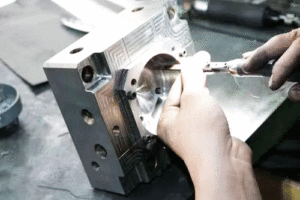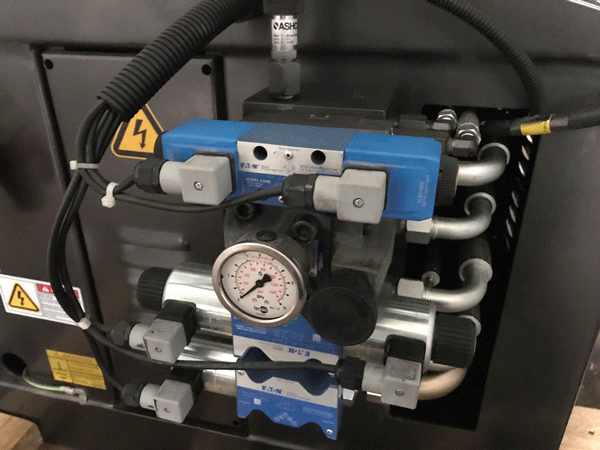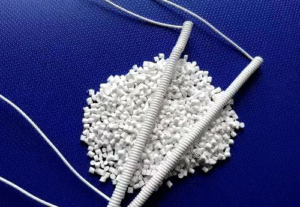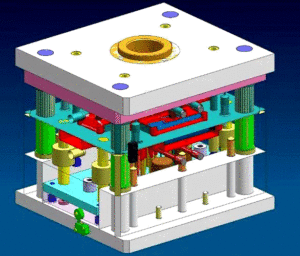
Polishing Treatment for Plastic Molds
Polishing Treatment for Plastic Molds With the widespread application of plastic products, such as daily-use items and beverage packaging containers, there is often a requirement
Because the injection molding equipment and the requirements for product quality continuously develop. Higher requirements for the injection molding process are put forward. Correct selection of injection equipment, reasonable setting of molding process and optimization process conditions are the keys to improving product quality.
When choosing the specification of injection molding machine, we must first consider the status of the production mold. Because the same injection molding machine often has to meet the production requirements of multiple molds of different sizes. And we should determine the injection molding machine specifications according to the weight of the part and the size of the mold, that is, the maximum clamping force and maximum injection volume. Then select the appropriate model according to the specifications and models provided by the injection molding machine manufacturer.
It is necessary to consider whether some special configuration is required, such as the use of special screws when producing PA, PC and other materials. And we should equip the corresponding device when forming the mold with core pulling or thread removal. Then, according to the mold structure, product quality, etc., decide whether it is necessary to choose some injection molding machines with special functions. For example, when forming thin-walled long-flow products (generally referred to as L / D300), high injection speed is needed, and precision electronic parts needs precision full-closed control injection molding machines, etc.
In theory, the clamping force can be calculated as follows:
Fcm> = K × P average × A product × 10
In the formula: Fcm-clamping force, (KN) K-safety factor, generally take 1-1.2 P average cavity pressure (MPa) A product-the maximum projection area of the product on the mold parting surface (c㎡)
In actual production, the adjustment of the clamping force should also take into account the influence of the thermal expansion of the mold during production. Generally, a margin of 0.1-0.2mm should be left. The setting principle of clamping force is :
Under the premise of ensuring product quality, low clamping force is appropriate.
Set the screw barrel temperature according to the performance of different plastic materials. The barrel temperature is generally set higher than the melting point of the plastic by 10 ℃ -30 ℃. It must be noted that the materials provided by different manufacturers will have different melting points and allowable residence time in the barrel due to different synthesis methods or types of additives added.
Generally, the circulating water cool the mold temperature when setting. But when producing products with high precision size or surface quality requirements, a mold temperature controller that can conduct accurate control should be used according to the process requirements.
Set the injection time, pressure holding time and cooling time according to product thickness, mold temperature, material properties, etc. The injection time is generally set to be slightly longer than the time for the screw to complete the injection stroke movement. Excessive injection time will not only cause negative effects such as mechanical wear and energy consumption, but also extend the molding cycle. Set the holding time according to the thickness of the product. And the thin-walled product doesn’t need the holding time when molding.
When setting the pressure holding time, make sure there is no obvious depression on the surface of the product. The weighing method can also determine the holding time. The time that the pressure holding time is gradually extended until the product quality no longer changes can be the optimal pressure holding time. Determine the cooling time according to the product thickness, mold temperature, and material properties. Generally, the cooling time amorphous polymers required is longer than that for crystalline polymers.
The setting of injection pressure should follow the principle of being low rather than high. As long as it can provide enough power to achieve the required injection speed and allow the melt to fill the cavity smoothly, that would be ok. Excessively high pressure can easily cause internal stress in the product. When forming products with high dimensional accuracy, we can use high pressure injection to reduce the shrinkage of the product after demoulding.
The injection speed will affect the appearance quality of the product. We should set it according to the geometry of the mold and the exhaust status. Generally, we should increase the injection speed as much as possible to reduce the filling time while ensuring a good appearance.
In the process of injection molding, when the melt flows in the mold, the mold wall will form a solidified layer. The layer will reduce the thickness of the flowable channel. Generally, according to the different mold structure and injection speed, the mold wall will have a solidified layer of about 0.2 mm. Therefore, we usually use the faster injection speed in molding.
In molding, we must first determine the injection stroke. In theory, the injection stroke can be calculated as follows:
S1 = 4 (CVp + Va) / ρDs2
In the formula: injection stroke Vp – product volume ρ – resin density C – number of cavities Va – gate volume Ds – screw diameter
In actual production, if the total weight of “product + gate” is known, the injection stroke S1 = (M / Mmax) · Smax + (5 ~ 10) mm
S1 in the formula: injection stroke, mm M-“product + gate” total weight, g Mmax-maximum injection volume of injection molding machine, g / Smax-maximum injection stroke of injection molding machine
For the different geometry of the runner system and the various parts of the mold, in order to meet the quality requirements of the product, there are different requirements for the flow state of the mold-filled melt (mainly referring to the pressure and speed during the flow) in different parts. In an injection process, when the screw advances the melt to the mold, it is necessary to achieve different pressures and speeds at different positions. And it’s called multi-stage injection molding.
In general, it is more scientific to set at least three or more injections during the molding of plastic parts. That is, the first section is the main channel. The second is from the runner to the gate. And the third is cavity filled about 90%. The remaining part is the fourth segment. Then, determine the switching position of each segment by the calculated weight method.
We should scientifically analyze and rationally set the multi-stage injection process parameters according to product quality requirements, flow channel structure, and mold exhaust conditions. Generally, it can be set by debugging and observing. The pressure / speed required to find the switching position during injection is set to 0. Observe the direction of melt and the defect status of product, and gradually adjust until you find the reasonable position. But in the process of debugging and observation, we must pay attention to the demoulding condition of the under-injected product, so as to avoid sticking of the mold due to under-injection in some concave parts of the mold.

In injection molding, in addition to the setting of several main parameters such as molding temperature, pressure, speed, time, multi-stage injection switching position. There are many other process parameters like back pressure, screw speed, screw reverse cable flow prevention and other operation parameter settings that we can’t ignore.
Taking the production of nylon cable ties as an example, product quality requirements:
First of all, determine the principle of process parameter setting according to product characteristics and mold structure:
To formulate injection process parameters, it is necessary to know about the following information:
First of all, adjust the process parameters step by step according to the molding conditions of the product. The correct adjustment sequence is pressure → speed → temperature. Each time the parameter changes, the input parameter has been confirmed by the computer before the next parameter change. Avoid changing more than two parameters at the same time.
Secondly, when the product begins stable production, keep the parameters as stable as possible and make detailed records. If the change is too large, finnd the reason in time. In addition, fix the molding process as much as possible each time the mold goes on line. Thus, it can facilitate the quality control of the finished product.

Polishing Treatment for Plastic Molds With the widespread application of plastic products, such as daily-use items and beverage packaging containers, there is often a requirement

Injection Molding Techniques for TPE and TPR Injection Molding Techniques for TPE and TPR 1. Dry the TPE and TPR material before injection molding It

Winter Maintenance Measures for Injection Molding Machines As winter approaches and temperatures gradually drop, a cold chill envelops the earth. While ensuring personal warmth, it

Assessment Regulations for Mold Trial Exceeding 3 Times Assessment Regulations for Mold Trial 1. Purpose The purpose of this regulation is to standardize the work of